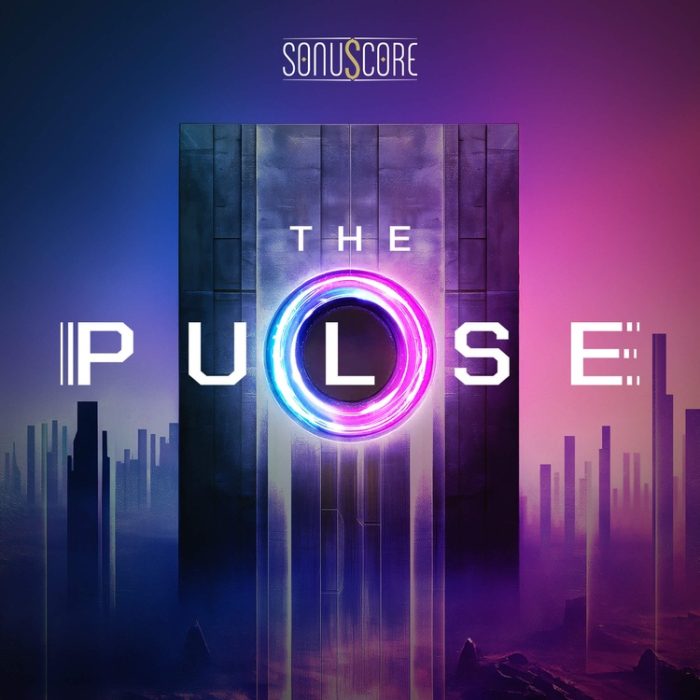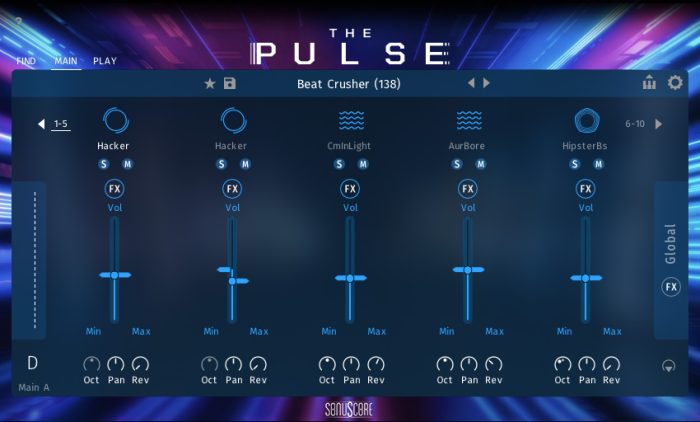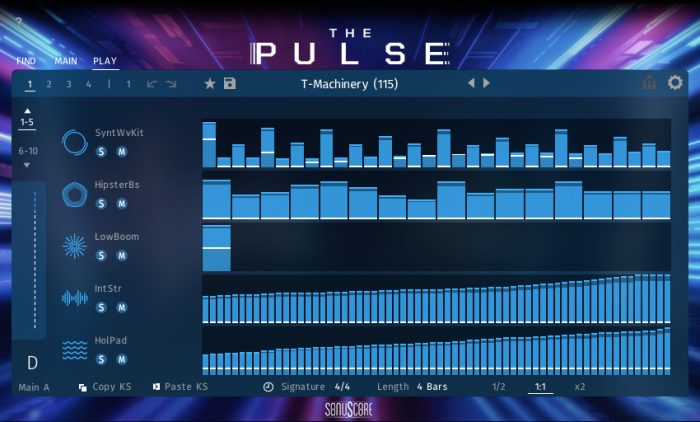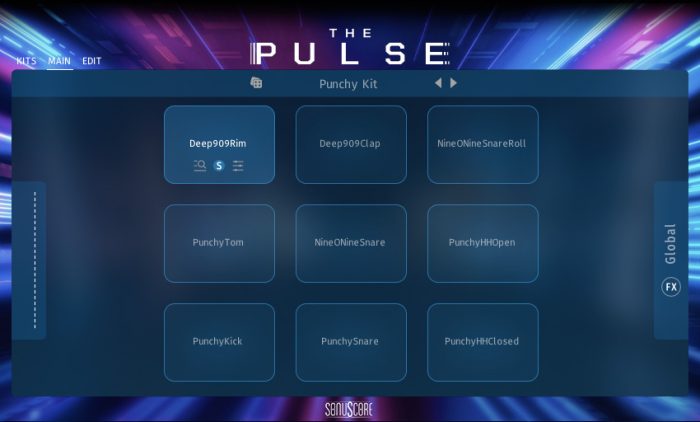Adam Douglas checks The Pulse, a gorgeous new Kontakt instrument with an electronic music focus from Sonuscore. Does it get his blood pumping?
It must be difficult to be a modern composer. Whether you’re working in film, television or video games, you have to know not only how to arrange for an orchestra but also about electronic music, synthesizers and up-to-date production tricks like ducking and modular synthesis.
Not everyone can be Ludwig Göransson, the genius behind genre-bending soundtracks like The Mandalorian and Oppenheimer. If you’re more comfortable with Beethoven than bass music, Sibelius than psy trance, you’ll want to check out The Pulse.
What Is The Pulse?
The Pulse is the latest instrument from Sonuscore, who scored a big hit with its last release, The Score. The Pulse puts the focus on electronic sounds and is, as the name suggests, all about rhythm and the electronic pulse that often runs throughout modern soundtrack work.
In the words of Sonuscore, The Pulse is a Dynamic Ensemble Engine. Each of the 80+ Sessions includes up to 10 layers of sounds, from drums and bass to pads and effects, that all play together. Think of it as a super pad machine that you control by playing chords with your right hand and triggering key switch variations with your left. Changes in dynamics are all assigned to the modulation wheel – bring it up to increase overall intensity. Simple, intuitive and very effective.
In terms of genres, most modern electronic music styles are represented, including techno, trance, IDM and synthwave, but the focus remains on mood and atmosphere rather than typical genre conventions. This is at heart a soundtrack composition tool, so while you get the usual 808s and 909s, you also get cinematic impacts and other sounds that work well in trailers and action scenes.
How to Use The Pulse
Despite its depth and flexibility, The Pulse is remarkably easy to use. The main focus is on the Ensemble Engine and its Sessions. These are organized into three types: Cinematic, which are more closely tailored to a big screen sound; Modern Genre for more of a purely electronic sound; and Ensembles, which are beatless. Each rhythm-focused Session has a target genre and BPM although, as it syncs to your DAW tempo, you’re free to use it however you like. Take this as a starting point.
Once you load a Session, you are taken to the Main screen, which looks like a mixer.
There are actually two screens, with instruments one to five on the first, and six to 10 on the second.
You get control over volume, pan, octave position, insert and global effects, plus easy access to the mod wheel range in the form of paddles on either side of the main volume slider. If a Session is too dense, just mute the instruments that you don’t need.
You can also swap out individual instruments, so you can create a custom Session with just pads, only impact sounds, etc.
The Pulse is all about rhythmic change and this is handled by the arpeggiator controls in the Play section, with lanes for velocity, pitch and chance as well as a sequencer for more controlled arpeggios and drum programming.
Lastly, there are individual NKIs for each instrument as well as a drum-only one for when you don’t need such a complex arrangement.
Putting The Pulse Through Its Paces
I’m not a soundtrack composer but I do make electronic music so I thought I would try using The Pulse as a starter for a new track. I chose the 160 BPM Hypnodemic session from the Modern Genre category, which has elements of IDM and drum and bass in the rhythm, and laid down a quick chord progression to hear how it sounded.
The kick was a little too loud and upfront and I wasn’t married to the drone, so I removed the kicks from the drum sequence and changed the drone to different pad, raising the octave as well for a higher sound.
Lastly, I played around with the compression and saturation in the master effects for a fuller vibe. In the end, I decided to delete the tonal elements, bounce out just the drums, re-import them as audio and use my chords with a beatless Ensemble pad called Photon Storm. All in all, this took about 10 minutes – very fast indeed.
Although I could go on from here and make any number of adjustment and customizations, including adding more effects, applying LFOs on the effects (including filter), tweaking the rhythmic ducking on the pads, and changing individual drum sounds, I was happy with the Session as it was.
Who is The Pulse For?
Sonuscore is positioning The Score as an instrument for composers, producers and beatmakers. The composers target demographic I 100% agree with. Ever since Hans Zimmer brought synthesizers into big-budget symphonic soundtracks, the industry has expected that most composers will be familiar with both ensembles and EDM. However, there’s only so much one person can know. I could see how having a resource like The Pulse at hand could be a real life-saver, especially when deadlines are tight and you need mix-ready electronic sounds immediately.
As for producers and beatmakers, I’m less convinced. That’s not because The Pulse isn’t useful (which it is) or sound good (which it does), it’s just that most seasoned electronic music producers will already have a well-stocked studio or plugin folder with instruments that can already do the same thing, although perhaps not all in one program.
Final Thoughts
Ultimately, I’m very impressed with The Pulse. Film and game music composers will certainly find a lot here to love. It’s easy to use and it’s almost silly how quickly you can get solid results. The depth of customization parameters also ensures that you’re not stuck with just presets either.
That being said, The Pulse is priced for composers, not producers. With a regular price of €299, it’s firmly in the working composer category of prices and on par with something from Spitfire Audio or CineSamples. General producers may find it overpriced for what they get.
However, if you’re a producer looking for something to give you a cinematic edge (and don’t mind the sticker price), The Pulse has a lot to offer as both a source for amazing sounds and as an inspiration machine.
Sonuscore The Pulse works with the free Kontakt Player and requires Kontakt Version 7.10.7 or higher and at least 2.65 GB of free hard disc space. The regular price is €299 but it’s currently on sale for €229.
 Save big with Plugin Boutique's Mixing Month Sale!
Save big with Plugin Boutique's Mixing Month Sale!





